Engineering college celebrates 20 years of building top-notch engineers
The college took on its name and its official structure in 2002.
Janel Shoun-Smith | 615.966.7078 |
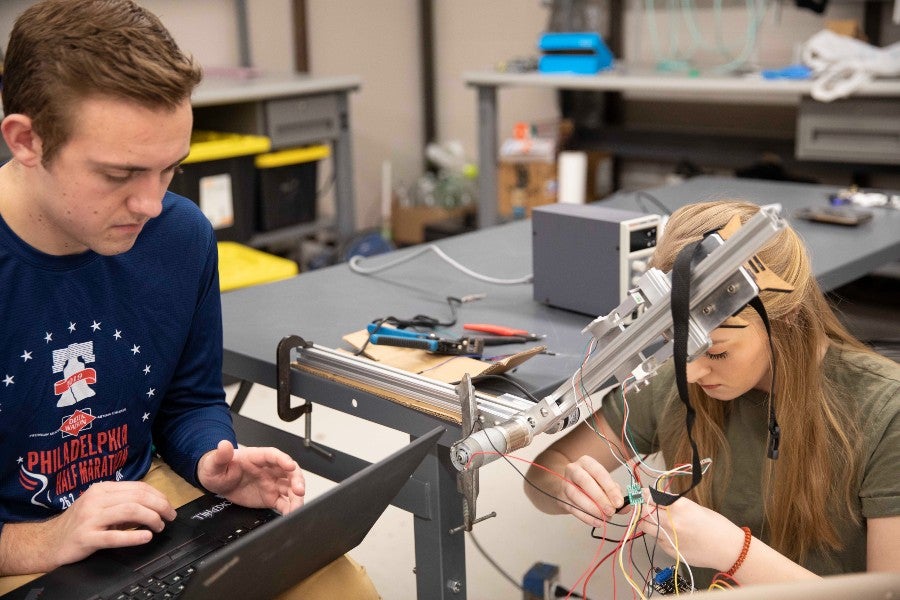
If there is one college at Lipscomb that knows about building, it’s the Raymond B. Jones College of Engineering.
This year, the college celebrated 20 years of building a strong and tall engineering college that develops courageous and confident leaders equipped with practical knowledge and rooted in their spiritual growth, who take on some of the most complex and difficult problems with their innovation and willingness to step out from the crowd.
The foundation for the Raymond B. Jones College of Engineering was laid as far back as 1938, when the university launched a pre-engineering program. Under Dr. Ralph Butler’s leadership, a physics program and the first computers coming online in 1972 were campus milestones that led to three, non-accredited programs in engineering science and engineering physics in 1973 and a computer science major in 1983.
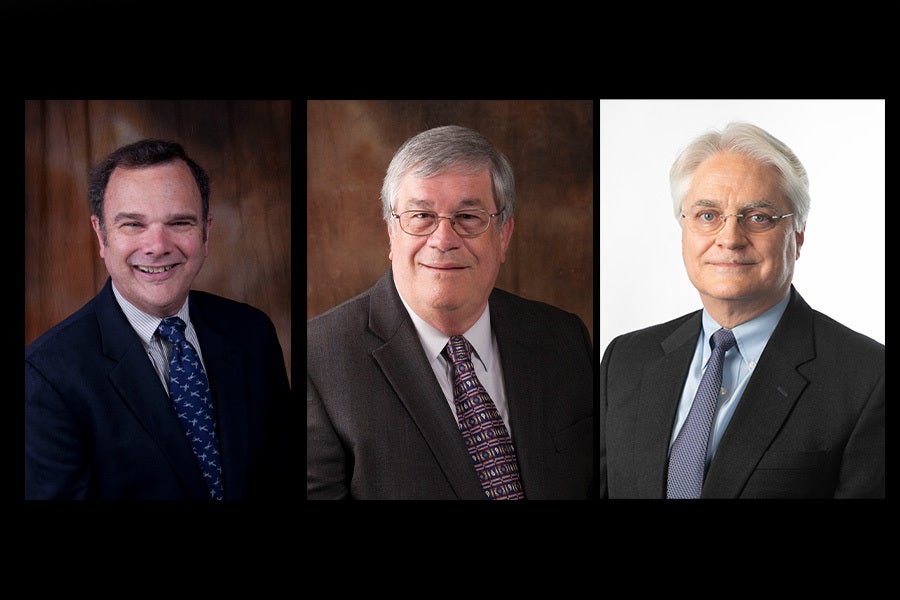
Over the past 20 years, the Raymond B. Jones College of Engineering has had three deans: Dr. Fred Gilliam, Dr. Justin Myrick and Dr. David Elrod.
The Raymond B. Jones School of Engineering was established and named after longtime Lipscomb trustee and lead donor Raymond B. Jones in 2002. The school graduated its first computer engineering major and engineering mechanics major that year, and Dr. Fred Gilliam became the founding leader of the school with the title associate dean.
The new school wasted no time obtaining accreditation from the Accreditation Board for Engineering and Technology (ABET) for its two majors in 2004. At that time, the school had graduated 10 students with engineering mechanics or computer engineering degrees since May 2002 and boasted 80 students enrolled in the two majors.
ABET accreditation lent a standard of quality and credibility to Lipscomb’s new engineering school, said Gilliam at the time.
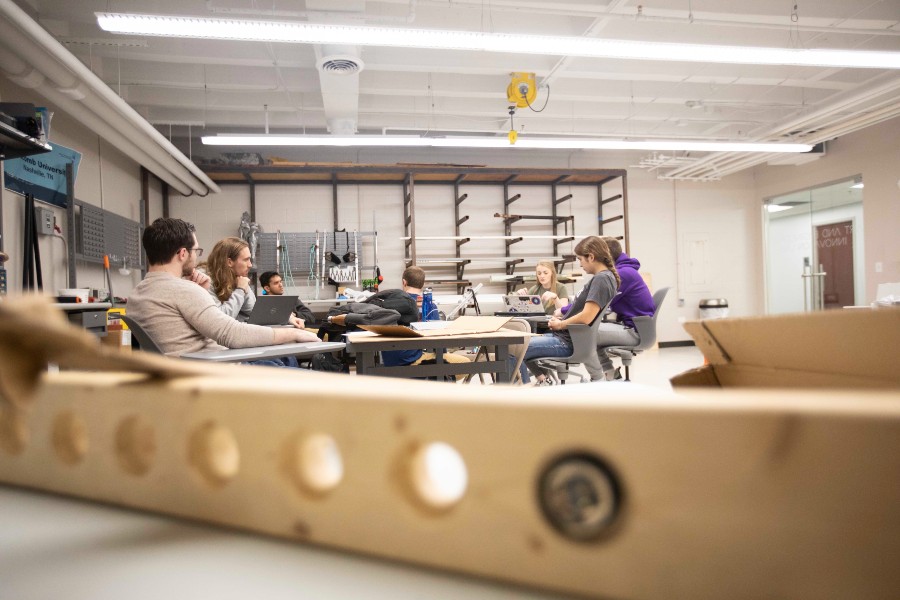
• In 2020 a student team competed in the Applied Collegiate Exoskeleton Competition at Michigan State University, to build a mechanical suit designed to augment the wearer’s strength and abilities.
The university’s decision to elevate the school of engineering to a college of engineering in 2009, spurred several years of growth with a civil engineering major added in 2010 and achieving ABET accreditation in 2014, when there were 38 declared majors.
At the time Dr. Justin Myrick took over the deanship of the college in 2012, it offered undergraduate degrees in electrical and computer engineering, mechanical engineering and civil and environmental engineering, and a graduate degree in engineering management. The college received its first National Science Foundation grant in 2015.
After having moved into its own space in the James D. Hughes Center in 2010, the college moved into a building of its own, the 26,800-square-foot Fields Engineering Center in 2017. The building houses collaborative learning spaces, flexible teaching areas and labs with cutting-edge equipment.
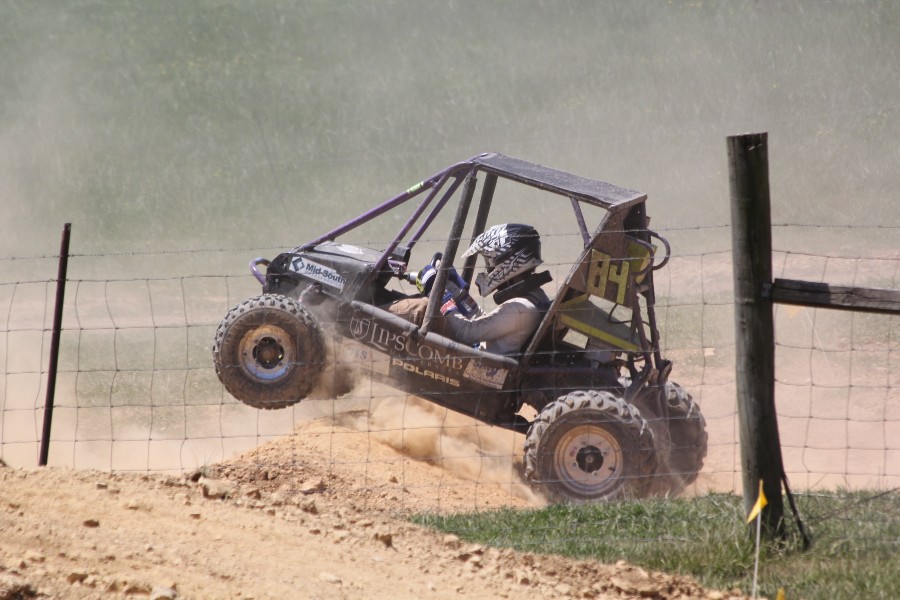
Competition in the mini-Baja Society of Automotive Engineers race was the first competition used to infuse the engineering curriculum with hands-on, real-world project work.
In 2018, for the first time, Lipscomb’s undergraduate engineering program ranked within the top 100 engineering programs in the country by the U.S. News and World Report. That same year, Lipscomb alumnus Dr. David Elrod ('77)was brought on as the new dean for the college.
From almost the very establishment of the school, Dr. Fort Gwinn (the longest serving professor in the college) worked with faculty to infuse the engineering curriculum with opportunities for hands-on, real-world project work. First in 2007 came the Baja SAE (Society of Automotive Engineers) team, now called Lipscomb Motorsports, to create an all-terrain vehicle to compete in an off-road race each year. By 2014, Lipscomb’s students placed 28th out of 100 competitors including Purdue University, Georgia Institute of Technology and Clemson University. By 2016 they placed 11th in the endurance competition.
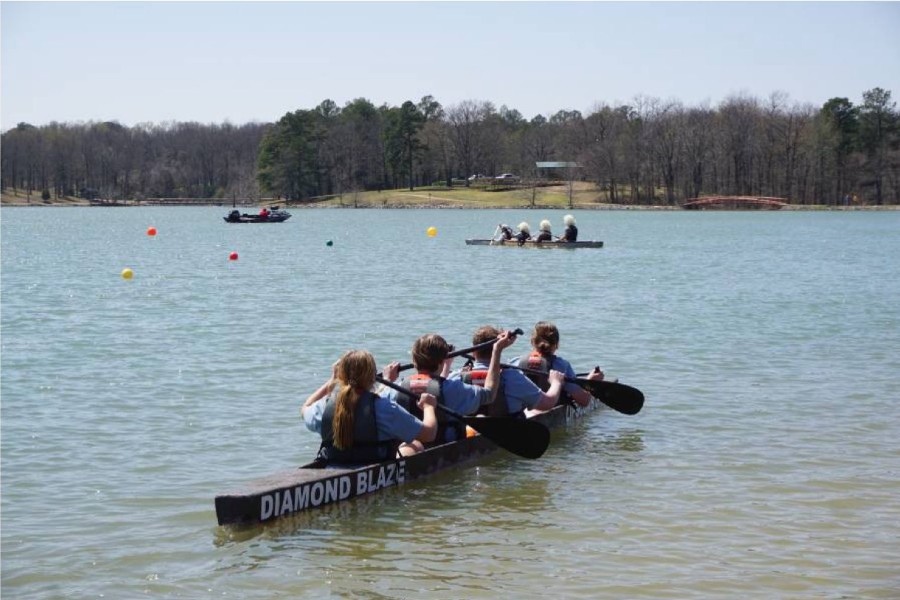
In 2022, the concrete canoe team of 21 civil engineering students made university history with a first place finish at the American Society of Civil Engineers’ regional competition for the first time.
Throughout the years, various other competitions have been added to the students’ slate of opportunities in various years:
- The concrete canoe team came along in 2015 and students took seventh place out of 22 teams in the 2016 American Society of Civil Engineers’ regional concrete canoe competition. In 2022, the team of 21 civil engineering students made university history with a first place finish overall for the first time.
- A team of nine engineering students placed 14th out of 42 teams in their 2017 debut showing at the Institute of Electrical and Electronic Engineers’ national robotics competition.
- In 2018, the Bison Ballistics team competed in the NASA Student Launch Competition for the first time and placed in the top ten in the nation. The annual competition challenges students to propose, design, build and test a reusable rocket that flies to 1 mile in altitude, deploys a recovery system and returns safely to the ground.
- The college began competing in the American Institute of Steel Construction's Steel Bridge Competition to develop a 20-foot, scale-model steel bridge able to carry 2,500 pounds in 2018. The 2022 team posted Lipscomb’s best construction time at just over 34 minutes and the best lateral deflection performance having only about 15% of the allowable.
- In 2020 a student team competed in the Applied Collegiate Exoskeleton Competition at Michigan State University, to build a mechanical suit designed to augment the wearer’s strength and abilities.
- In 2021 a student team competed in the Society of Automotive Engineers’ Aero Design Challenge to build an aircraft with a 8-foot wingspan and enough cargo space to hold a soccer ball.
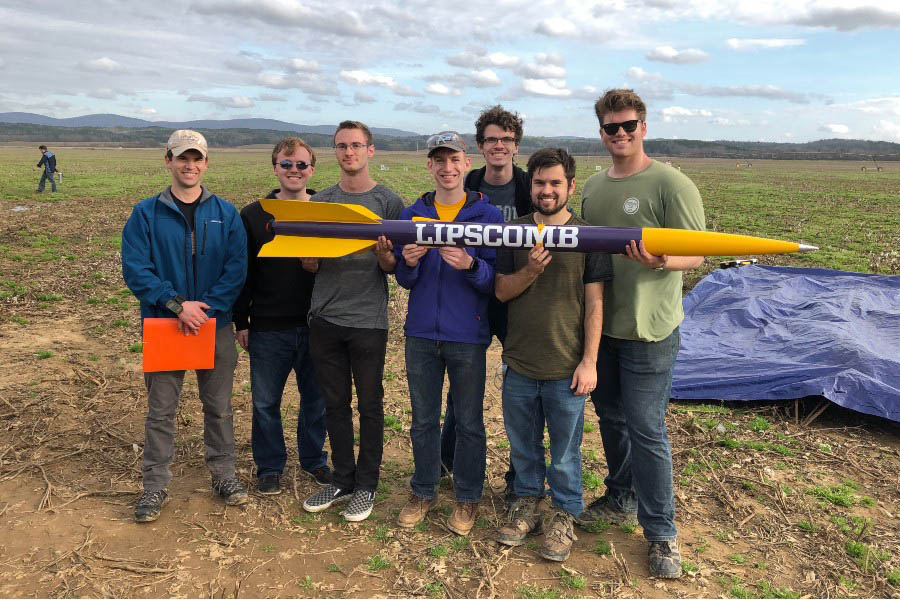
In 2018, the Bison Ballistics team competed in the NASA Student Launch Competition for the first time and placed in the top ten in the nation.
Another real-world experience launched in the very early days of the college, in 2004, the same year as ABET accreditation, was linking engineering projects to humanitarian service installed in disadvantaged nations around the world.
Beginning with a trip coordinated by computer engineering faculty David Fann, the college has sent 77 volunteer student teams since 2004 to work on a variety of projects from pedestrian bridges and clean water systems in Guatemala to a wastewater treatment system in Ghana. From a therapeutic playground in Honduras and solar power systems in Malawi to a solar power system for tiny homes housing homeless individuals in Nashville.
This service-oriented approach to providing holistic, long-term community change became so embedded in the engineering program that in 2014 the university established the Peugeot Center for Engineering Service in Developing Communities to supervise the fundraising and strategic organization of such projects throughout the school year. Lipscomb trustee Dick Peugeot and his wife Mary Ann funded the Peugeot Center, and Kerry Patterson, mechanical engineering faculty at the time, became the first Peugeot director.
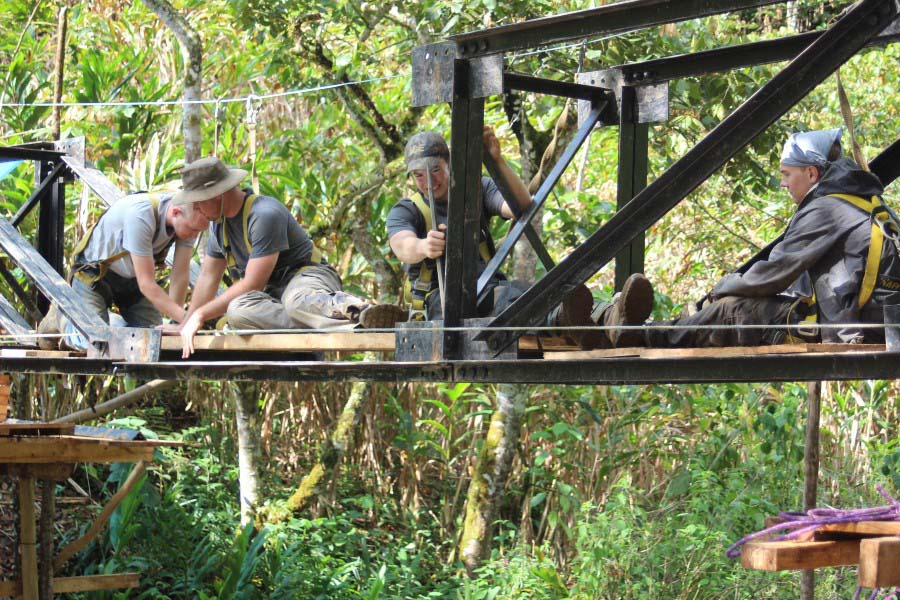
The college has sent 78 volunteer student teams since 2004 to work on a variety of projects from pedestrian bridges and clean water systems in Guatemala to a wastewater treatment system in Ghana.
The Peugeot Center has seven 2023 teams coordinated and ready to advance the progress of solar power, wastewater sanitation, water distribution, electrical, pedestrian bridge and bio-incineration projects in Honduras, Ghana and Guatemala.
All students in Lipscomb’s engineering college must complete a senior project, carried out in teams with fellow senior students, providing the experience of taking a project from initial design to completion, to practice collaboration and teamwork and to see what the actual workplace experience can be like. With 55-60 seniors graduating each year, the various engineering competitions and international and domestic humanitarian projects all serve to fuel the need for meaningful senior projects.
Also advancing the hands-on experience of students is an on-campus wind tunnel, donated in 2019 by international engineering firm Jacobs and installed and upgraded by engineering students from various majors.
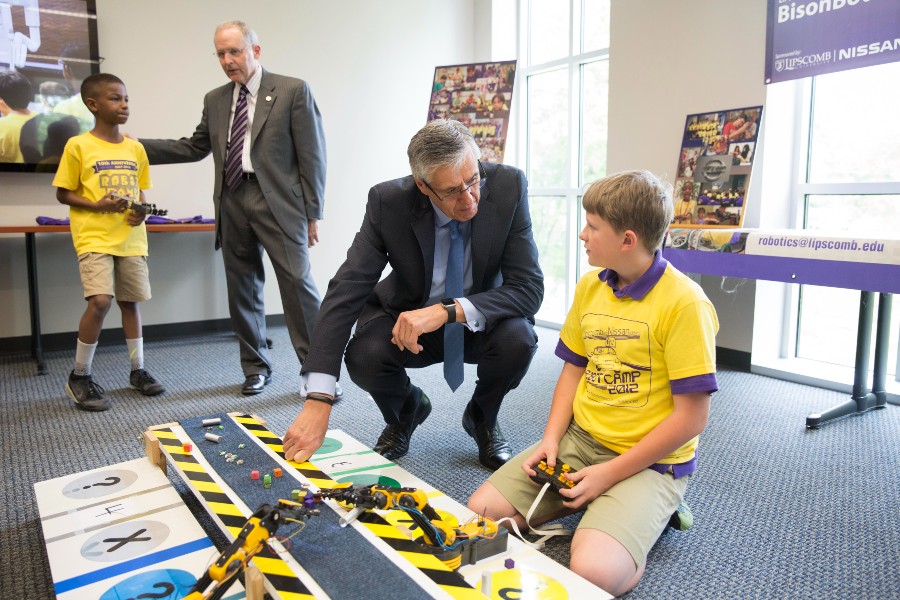
Special guests at the opening of the Fields Engineering Center visited with K-12 students learning robotics concepts from Lipscomb faculty and students.
Nissan U.S. has also been a long-time partner of the college, funding STEM opportunities that have fueled both university students and local grade-school students since 2010.
Over the years, Nissan has donated $858,500 to Lipscomb to fund summer robotics camps for all ages, the Music City BEST Robotics Competition for middle and high schoolers, parts and equipment for the SAE all-terrain vehicle, stipends for students to engage in summer internships during the pandemic and in the past two years the AERO math bridge program (Accelerated Engineering Readiness Opportunity) for aspiring engineering majors.
Earlier this year, the college enjoyed a new milestone with the establishment of the School of Computing, which houses four new majors: computer science, software engineering, cybersecurity and information technology. More than 130 students are already enrolled in the school, which boasts a dedicated cybersecurity lab and student cyber defense competition team.
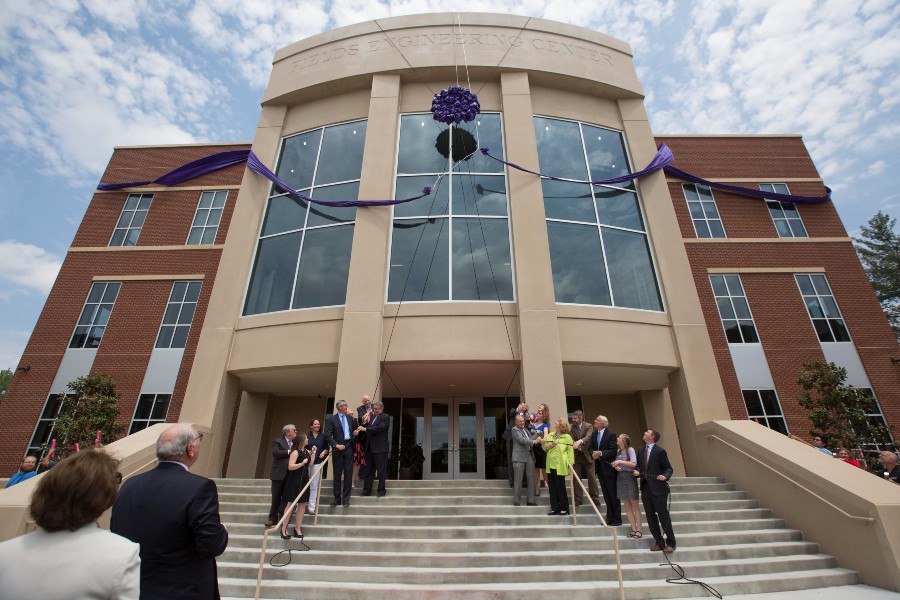
Dignitaries and guests cut the ribbon at the opening of the Fields Engineering Center in 2017.